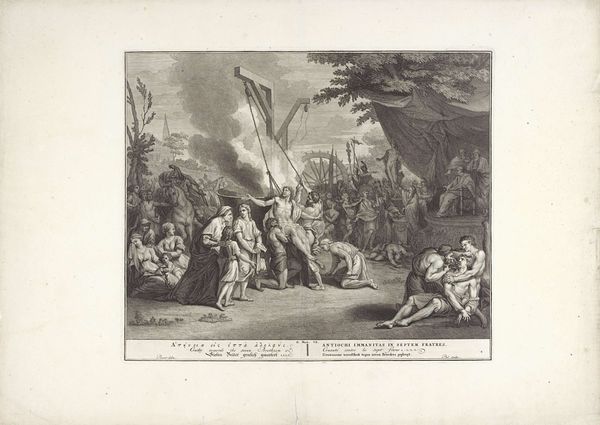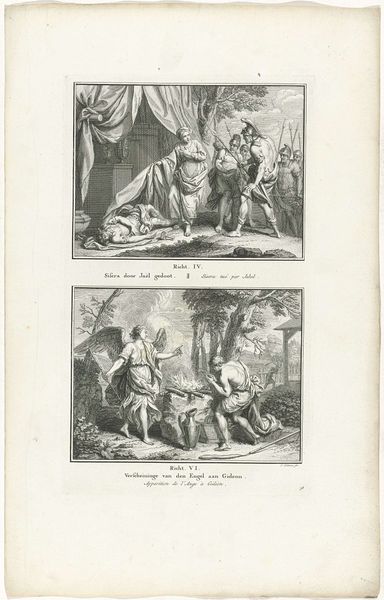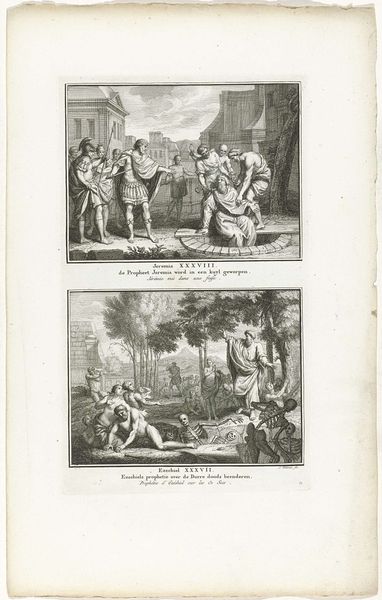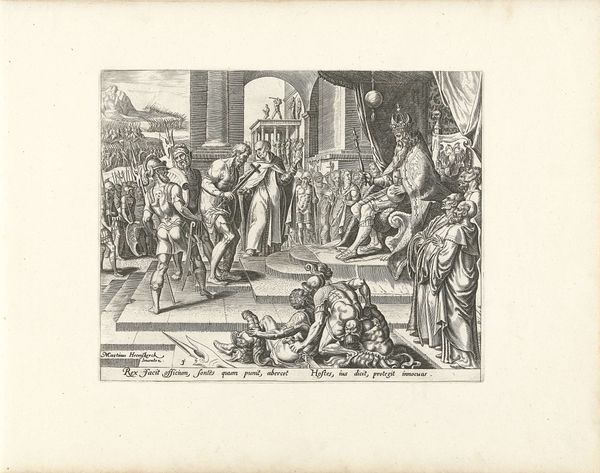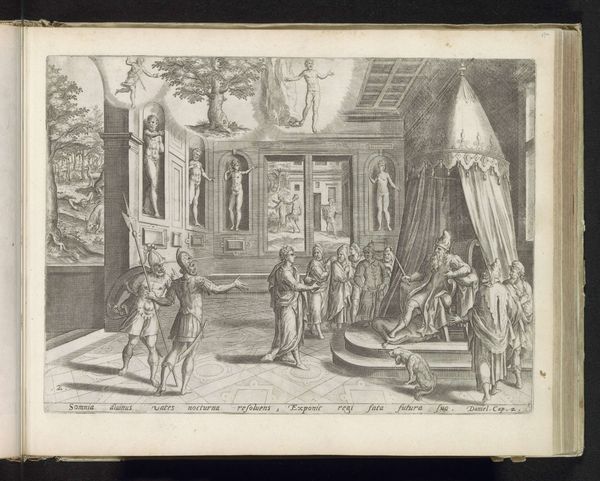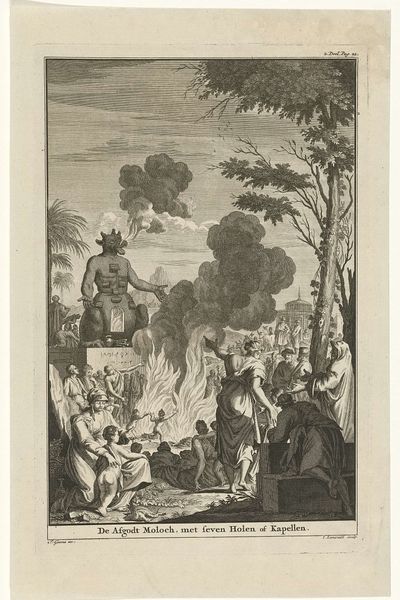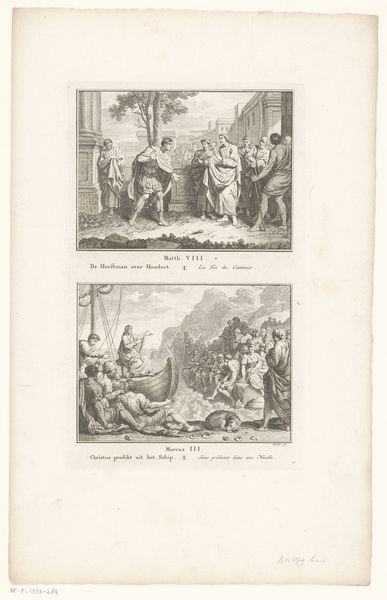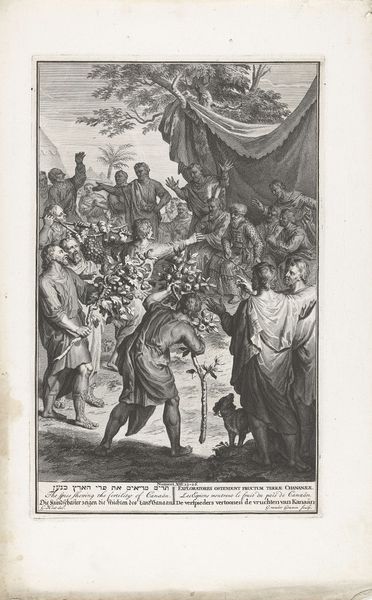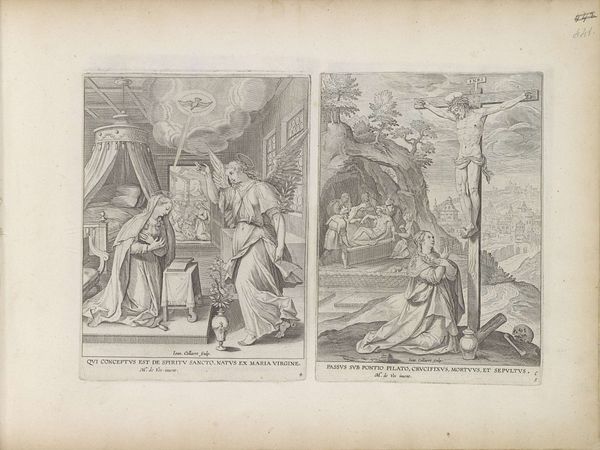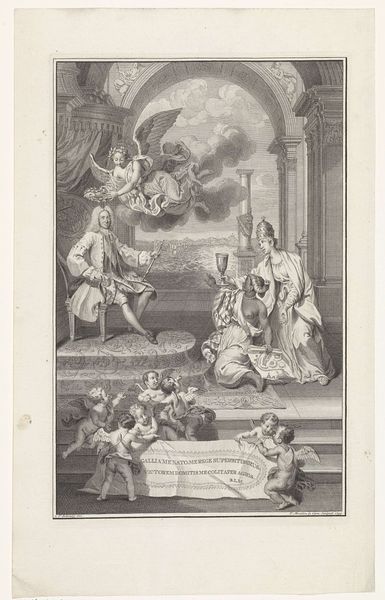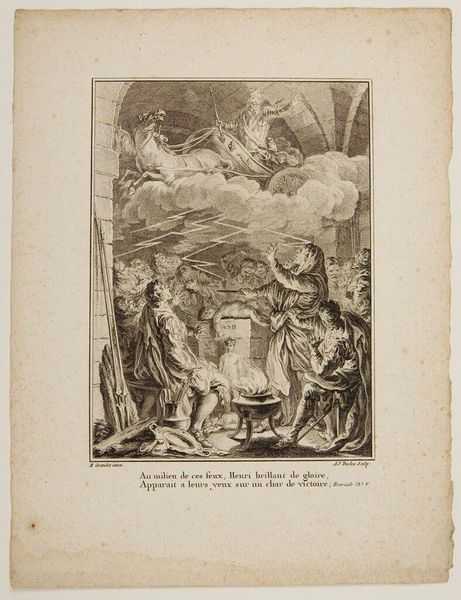
print, engraving
#
narrative-art
#
baroque
# print
#
old engraving style
#
figuration
#
line
#
history-painting
#
engraving
Dimensions: height 352 mm, width 422 mm
Copyright: Rijks Museum: Open Domain
Curator: Matthijs Pool’s engraving, likely created between 1705 and 1728, depicts the biblical story of Shadrach, Meshach, and Abednego in the fiery furnace. The piece, rendered in a striking linear style, offers a dramatic interpretation of faith under duress. Editor: My initial impression is that this piece presents a stark dichotomy, a tangible conflict between the ordeal of the fire and the serene expressions on the figures within. Curator: That contrast is central. The story itself speaks to defiance against state-sponsored idolatry. These men refused to worship a golden statue erected by King Nebuchadnezzar, leading to their condemnation. In a broader sense, we can interpret their resistance as a metaphor for challenging oppressive power structures. The fiery furnace, rather than being destructive, becomes a site of resistance and even triumph. Editor: I agree. Considering the materials—ink and paper—it's remarkable how Pool conveyed such palpable heat. The sharp, deliberate lines create a sense of both intensity and constraint, and the use of engraving allows for precise detailing. One can sense the laborious process. Curator: Pool's commitment to line emphasizes the power of the body as a site of resistance, their collective solidarity amplified within the frame. How does the technique underscore the narrative? Editor: The dense crosshatching definitely contributes to the smoky atmosphere, and visually it almost overwhelms the smoothness of skin depicted here. Considering that the bodies are the site of punishment but also their strength in faith. The flames appear quite active! Curator: It invites considerations about visibility, oppression, and defiance within early modern power dynamics. How might contemporary viewers have understood this piece within their own socio-political contexts? The layered inscriptions in several languages suggests to the works international circulation as a cultural and moral guide, even with no artist visible in the work. Editor: Definitely the material nature speaks directly to its potential circulation but also the endurance of an allegorical symbol under harsh making, that later became the finished, easily produced image. An intriguing tension between form and process. Curator: Absolutely. This exploration reveals the artwork as a multifaceted commentary on faith, resistance, and representation, echoing historical struggles that resonate even today. Editor: And for me, thinking about process adds an important dimension of materiality to it, making that story vivid on many levels!
Comments
No comments
Be the first to comment and join the conversation on the ultimate creative platform.
